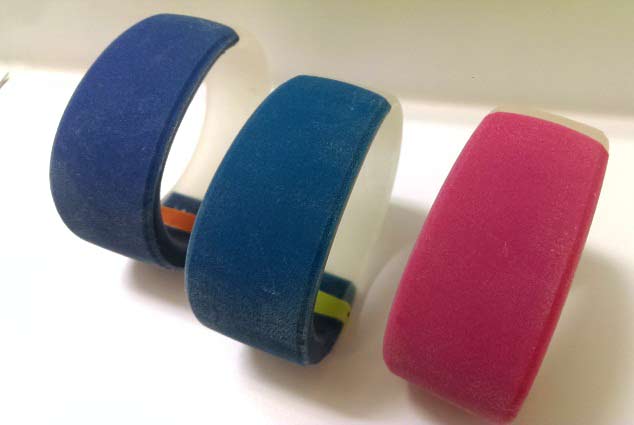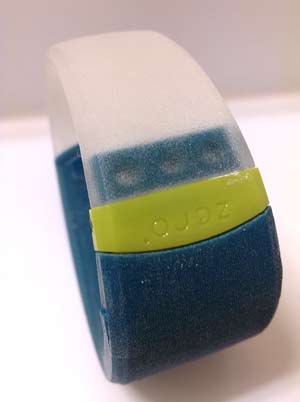 Wearable technology is the name given to clothing or accessories that incorporate digital elements, whether practical or for purely aesthetic reasons. The famous Google Glass technology is one example but things such as smartwatches or the coyly named CuffLinc, which contains a tiny wireless device allowing users to send signals to their contacts at the touch of a button, are becoming more and more common. The days of the Star Trek Cyborg are not yet upon us but only just…
Wearable technology is the name given to clothing or accessories that incorporate digital elements, whether practical or for purely aesthetic reasons. The famous Google Glass technology is one example but things such as smartwatches or the coyly named CuffLinc, which contains a tiny wireless device allowing users to send signals to their contacts at the touch of a button, are becoming more and more common. The days of the Star Trek Cyborg are not yet upon us but only just…
On a more earthly note, the design consultancy firm zero360 and the company Industrial Plastic Fabrications have teamed up to create a prototype for a wristband that can detect the biosigns of its wearer. Using an Object500 Connex3 Color Multi-Material 3D Printer from Stratasys, designers were able to choose from a multitude of colors for the wristband. A total of 10 color palates were created for the bands and those palates can be further combined to create 46 different options.
It’s no surprise that more and more companies are becoming involved in the wearable technology market. ResearchMoz, home of the world’s fastest growing market research reports collection, predicted that by 2018 the global wearable technology market will reach approximately $5.8 billion.
 It’s not all about the way these things look, however. Ergonomics plays an important role in the design and production of wearable technology. Director of Product Design at zero360, Luke Guttery, discussed the relationship between materiality, comfort, and 3D printing in a recent interview with TCT magazine:
It’s not all about the way these things look, however. Ergonomics plays an important role in the design and production of wearable technology. Director of Product Design at zero360, Luke Guttery, discussed the relationship between materiality, comfort, and 3D printing in a recent interview with TCT magazine:
“Comfort is a really important factor in sustained engagement, so being able to rapid prototype these is a key part of the development process. Also, the Objet Connex’s flexible material is very durable and is as good as casting, which is a massive plus, as it’s quicker to produce.”
 If time is money, the use of 3D printing to create these objects really is a worthwhile investment as it takes only a few hours to print one of the wristbands from zero360. In addition, by making use of the Objet500 Connex3’s capacity for printing in multiple colors, any one print can run 46 colors in multiple materials. This flexibility allows for many different multi-material design variations to be prototyped at the same time.
If time is money, the use of 3D printing to create these objects really is a worthwhile investment as it takes only a few hours to print one of the wristbands from zero360. In addition, by making use of the Objet500 Connex3’s capacity for printing in multiple colors, any one print can run 46 colors in multiple materials. This flexibility allows for many different multi-material design variations to be prototyped at the same time.
Beyond the timesaving, there is also less material wasted when producing the wristbands in this way. In fact, Guttery estimated that there is approximately an 85% savings in material used when compared to casting as a production method.
Whether used as a method for prototyping or to create a finished product, we can expect to see more 3D printing in the process of creating wearable technology, significantly expanding both the ergonomics and the aesthetics of these functional fashion statements. Let’s hear your thoughts on this story in the 3D printed wearables forum thread on 3DPB.com. Check out the video below for more details on how 3D printing was used in this case.
Subscribe to Our Email Newsletter
Stay up-to-date on all the latest news from the 3D printing industry and receive information and offers from third party vendors.
You May Also Like
Precision at the Microscale: UK Researchers Advance Medical Devices with BMF’s 3D Printing Tech
University of Nottingham researchers are using Boston Micro Fabrication‘s (BMF) 3D printing technology to develop medical devices that improve compatibility with human tissue. Funded by a UK grant, this project...
3D Printing Webinar and Event Roundup: April 21, 2024
It’s another busy week of webinars and events, starting with Hannover Messe in Germany and continuing with Metalcasting Congress, Chinaplas, TechBlick’s Innovation Festival, and more. Stratasys continues its advanced training...
3D Printing Webinar and Event Roundup: March 17, 2024
It’s another busy week of webinars and events, including SALMED 2024 and AM Forum in Berlin. Stratasys continues its in-person training and is offering two webinars, ASTM is holding a...
3D Printed Micro Antenna is 15% Smaller and 6X Lighter
Horizon Microtechnologies has achieved success in creating a high-frequency D-Band horn antenna through micro 3D printing. However, this achievement did not rely solely on 3D printing; it involved a combination...





























